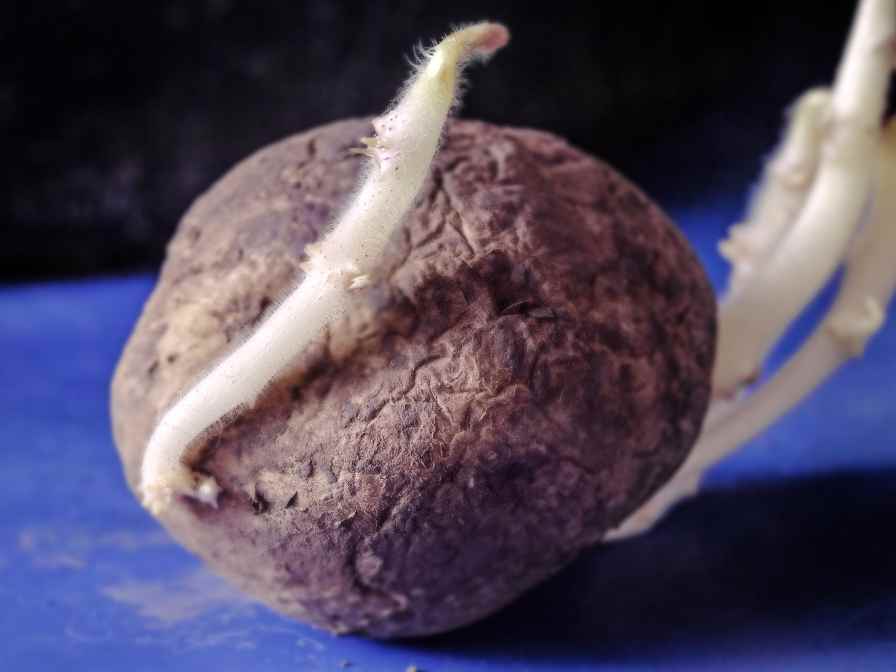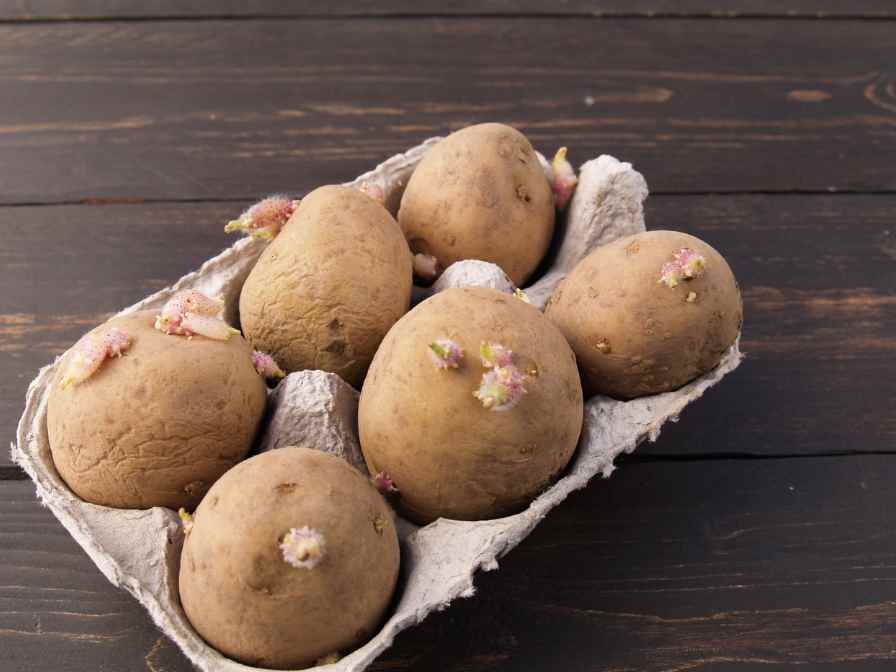Potatoes are a part of everyone’s diet. These are used in many shapes and forms almost across all cultures. While planting the potatoes there comes a main question of how to get potatoes to sprout. It is because when people buy potato seed, they have to wait for sprouting to sow it for further growth.

Potatoes
Potatoes are starchy root vegetables that are a very common food in many areas of the world across cultures. They are a good source of carbohydrates, dietary fiber, and several minerals and vitamins, like potassium, vitamin B6, and vitamin C.
Potatoes can be prepared in many ways, such as fried, roasted, boiled, mashed, baked, and grilled. They are also used to make a variety of dishes, such as potato soup, potato salad, French fries, and potato chips.
There are many varieties of potatoes, including russet, red, yellow, white, and Yukon Gold potatoes, and each type has its own unique flavor and texture. Potatoes can be stored in a cool, dry place for several weeks, depending on the variety.
Potatoes are such a vegetable that no one denies liking or eating them. Many people think that it can be grown successfully on a commercial scale only. Well, this is not the case. You can grow them in your garden, or even in pots as well.
Process of Planting Potatoes
Before we tell you about how to get a potato to sprout, you should know it is being planted and where the sprout plays a role. So, here is the process of planting potatoes.
Select a location with well-drained soil and full sun exposure. Potatoes prefer slightly acidic soil with a pH between 4.8 and 5.5. Till the soil and make it lose. Remove if there are any hard materials like rocks, weeds, etc. there. Add compost or other organic matter to improve soil fertility and structure.
Use certified disease-free seed potatoes and cut them into pieces, making sure each piece has at least one “eye” or bud. Dig shallow trenches about 4-6 inches deep and 12-18 inches apart. Place the seed potatoes with the cut side down and the eye facing up, spacing them about 8-12 inches apart.
Cover the seed potatoes with 2-3 inches of soil and water thoroughly. As the plants grow, gradually mound soil around the stems, leaving only the top few leaves exposed. This process, called hilling, protects the developing tubers from light and encourages more growth.
Potatoes need consistent moisture to grow well, so water regularly and deeply, especially during dry spells. Fertilize with a balanced fertilizer at planting time and again when the plants start to produce flowers.
Potatoes are usually ready to harvest about 2-3 months after planting when the plants start to die back. Carefully dig up the potatoes with a fork or shovel, being careful not to damage them. Let the potatoes dry and cure in a cool, dry place for 1-2 weeks before storing.
Why sprouting is important
After you have selected the seeds which are certified or these seeds are suggested to be planted, then you need to wait for sprouting. Sprouting has many benefits attached. Here are some of the common benefits of sprouting:
Faster growth
When you sprout potatoes before planting, you encourage the growth of the eyes, which are the small buds on the surface of the potato. This can help the potato plant grow faster once it is in the ground. This means it has gone through the basic step of growth.
Higher yield
By sprouting potatoes before planting, you can increase the number of stems that emerge from each potato, leading to a higher yield of potatoes at harvest time. Because now you are knowingly planting the seeds which are surely going to grow.
Disease prevention
Sprouting potatoes before planting can help prevent disease by allowing you to inspect each potato for signs of rot or disease before planting. This can help you avoid introducing diseases into your soil. you would be able to select the right and healthy potato.
More consistent growth
Sprouting can help ensure more consistent growth of the potato plant, as each sprouted potato will have a head start on growth compared to a non-sprouted potato.
Longer harvest window
By sprouting your potatoes before planting, you can stagger your planting times and have a longer window for harvesting fresh potatoes throughout the growing season.
Overall, sprouting potatoes before planting can help ensure a healthy, productive potato crop with a higher yield and fewer disease issues. It is a win-win situation like you already got rid of the bad ones and got good germination in return.
How to get Potatoes to Sprout?

To plant the potatoes, you have to get them to sprout. Once they are completely sprouted, you would be able to sow the potatoes. Here are the steps to get the potatoes to sprout.
Choose seed potatoes
Select healthy, disease-free seed potatoes. You can use whole potatoes or cut them into pieces, with each piece containing one or two eyes. You can go for the certified seeds, which are usually imported ones and are available in the seed shops.
Store the potatoes
Place the seed potatoes in a cool, dry location with temperatures between 45-55°F (7-13°C). Avoid direct sunlight or high humidity, which can cause the potatoes to rot or sprout unevenly. This will help them in sprouting quickly.
Allow sprouts to form
After a few weeks, the potatoes should begin to sprout. If they don’t sprout after 4-6 weeks, move them to a slightly warmer location to encourage sprouting. Once sprouts will be formed, then you would be able to distinguish which potato to plant or not.
One other method used by commercial growers is dipping the potatoes in a solution of gibberellic acid and water. It acts as a plant hormone that will fasten the process of sprouting.
Monitor the sprouts
Check the sprouts regularly and remove any that are weak or thin. Leave the strongest sprouts on the potatoes to ensure healthy growth. If you notice any potato is not in good form, you can get rid of them.
Harden off the sprouts
About 2 weeks before planting, move the sprouted potatoes to a warmer, brighter location to harden off the sprouts. This will help prepare them for the outdoor conditions they’ll face in the garden. You can start cutting the potatoes with sprouts. Leave at least one sprout on each cutting.
Plant the potatoes
Once the sprouts are about 1/2 to 1 inch long, you can plant the potatoes in the garden. Plant them with the sprouts facing up, about 4-6 inches deep and 12-18 inches apart. Following these steps should help encourage the sprouting of your potatoes and set you up for a successful potato crop.
In short, you can get the potatoes to sprout quite easily. Important is that you get the right seed of the potatoes at the right time. Once placed with care, it will get sprouted by itself. Then you can go to a plantation of potatoes.
FAQs
How long it takes potatoes to sprout?

It doesn’t take much longer for potatoes to sprout. You can simply get them sprouted in 2 to 4 weeks. In simple, once you have selected the right type of seed, the time is right. You will get the potatoes sprouted in the normal manner.
What makes the potatoes sprout faster?
Potatoes can sprout faster if they are kept in dry, and little cold areas. Don’t get them exposed to the sunlight. It can cause a burn or rot as well. You can also use plant hormones to make them sprout faster.
Can sprouted potatoes be eaten?
Yes, simply saying yes you can eat them. But as they are sprouted it is good to sow them and get more of them rather than eating them.
